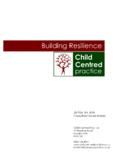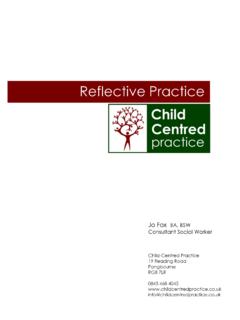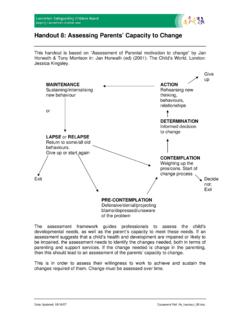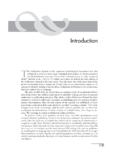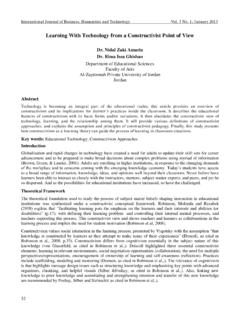Transcription of Representing Children’s Identities in Core …
1 Representing children s Identities inCore AssessmentsJane Thomas and Sally Holland*Jane Thomas is a children s Guardian in CAFCASS, Cymru. She is a candidate in CardiffUniversity s School of Social Sciences. Sally Holland is a senior lecturer in social work at CardiffUniversity. She is a former children s social worker. The second edition of her bookChild andFamily Assessment in Social Work Practicewill be published by Sage in 2010.*Correspondence to Dr Sally Holland, Cardiff University School of Social Sciences, KingEdward VII Avenue, Cardiff CF10 3WT, Wales, UK. paper reports findings from a qualitative research study of twenty-six core assess-ments, concerning thirty-two children , completed over a six-month period in oneWelsh local authority. The data reported in the paper come from the twenty-sixwritten assessment reports and interviews with the thirteen social workers who com-pleted the assessments.
2 The study was concerned with how social workers assess andreport on children s Identities . Identity is one of the seven developmental needs of chil-dren categorised in theFramework for the Assessment of children in Need and theirFamilies(National Assembly for Wales, 2001b). It is noted that practitioners display abroad understanding of Identities when discussing their own Identities in interviewand report a practice commitment to learning about the details of children s lives inan attempt to get to know the children . However, the assessment reports tend toconvey only narrowly defined and negative aspects of the children s Identities , withmany descriptions standardised and replicated between reports. Similarities to findingsfrom a study conducted by one of the authors prior to the introduction of theAssess-ment Frameworkare noted, and it is suggested that bureaucratic constraints, theneed to argue a case and defensive practices may have impeded :Assessment, bureaucracy, children in need, identityAccepted: December 2009 IntroductionThis article explores the issue of how children are portrayed in assessmentreports.
3 Using the specific example of the identity section in the core #The Author 2009. Published by Oxford University Press on behalf ofThe British Association of Social Workers. All rights Journal of Social Work (2009)1 17 British Journal of Social Work Advance Access published December 21, 2009 by Fareena Shaheed on October 2, from Assessment of theFramework for the Assessment of children in Need andtheir Families1(National Assembly for Wales, 2001b), we examine howchildren s needs and strengths are analysed and represented by prac-titioners for the purposes of decision-making arenas such as the familycourt and case conferences. How children are represented in this way is per-tinent for two reasons. First, how children are portrayed in the assessmentas a whole is important because assessment reports can become persuasiveand enduring pictures of a child s situation.
4 They may influence how achild s needs are approached and re-assessed for years to come. It isknown that once a case has been categorised, practitioners tend to filterall new information about the family situation in the light of that categoris-ation (Farmer and Owen, 1995) due to a human tendency to be verifica-tionists (Sheldon, 1987). As Teohet al.(2003) remind us:The importance of the written records, reports and files are crucial to theway cases are constructed. After a while a file takes on a life of its own,and it can be very difficult to question what it appears to represent (Teohet al., 2003, p. 157).Second, the specific category of identity is important because it touchesthe core of one s being, the subjective sense of self and therefore itcould be argued that it is vitally important to be sensitive and balanced inhow a child s identity is this article, we report on a qualitative study of the assessments ofthirty-two children from one local authority area team in Wales.
5 Weexplore how the functioning of the task of assessing and reporting children sneeds creates a dissonance between the practitioners identity knowledge(of what constitutes identity and knowledge of the particular child) andwhat they produce in the confines of an assessment report. The reportsthemselves are generally narrow, negative and relatively impersonal, inmany ways replicating the findings of one of the authors in a study con-ducted a decade earlier (Holland, 2004). We conclude the article bysuggesting ways of balancing and broadening the perspective produced inan assessment report, whilst exploring the question of whether portrayinga child s identity in this format is, in fact, an unrealistic : Identities and assessmentsThere appears to be growing interest in exploring the subjective experi-ences of Identities , with the term identity being used in association, orsometimes interchangeably, with the notion of subjectivity.
6 Rejecting anessentialist position in which Identities are presented as discrete, necessary,historically stable, and personally unalterable (Verkuyten, 2003, p. 374),current sociological and psychological approaches recognise that an indi-vidual s identity is not fixed and is contextually contingent (Segal, 2008).Page 2 of 17 Jane Thomas and Sally Holland by Fareena Shaheed on October 2, from Our Identities are dynamic and interactional. We construct and accomplishour understandings of self through culturally available discourses andeveryday interpersonal interactions. There are a multitude of potentialtheoretical influences on how we might understand Identities , across anumber of disciplines, and here we briefly survey some important theoreti-cal theorists such as Winnicott (1956) emphasised how oursense of self is developed in early infancy through relationships withprimary care-givers.
7 He noted that an infant requires good enough par-ental care in order to be able to develop a sense of self from I to I am to I am alone but there are others I can relate to . Similarly, attachmenttheory emphasises relationships with primary care-givers as central to anindividual s development of an internal working model of self and howthey expect others to respond to them (Ainsworthet al., 1978). These the-ories centre on primary relationships, particularly with mothers. Other the-ories have tended to explore wider societal relationships, roles and culturalnorms. Mead (1934) saw the self as divided into two halves: the I theinner self, which contains the inner wishes of the individual, and the Me the outer self, which considers the individual s perception of howothers perceive it. For Mead, our internal self-recognition (the Meadian I ) is involved in a constant dialectic with our perceptions of how othersperceive us (the Meadian Me ).
8 As such, Mead considered identity to bea product of social interaction, in that people come to know who they arethrough their interactions with others. Berger and Luckmann, in theirseminal work,The Social Construction of Reality(1966), also consider iden-tities as constructed by social interaction. The authors maintain that identi-ties are, at the same time, willed creations and constraining structures: Societies have histories in the course of which specific Identities emerge;these histories are, however, made by men [sic.] with specific Identities (Berger and Luckmann, 1966, p. 173).Post-structural theorists such as Butler (1990) and Walkerdine (1999)emphasise how Identities are enacted and produced through discourserather than forming an essential, interior and stable sense of self (Dunn,1998). For example, Butler (1990) argues that gender exists only throughperformance and thus is neither a pre-determined nor necessarily abinary condition.
9 Walkerdine (1999, p. 4) defines it thus:..the human subject is produced in the discursive practices that make upthe social world (as opposed to a pre-given psychological subject who ismade social or socialised).Some of the most recent theorists of identity, including Butler s recent writ-ings, acknowledge that the biological and material interact with the culturalin the doing of identity (Segal, 2008). McAdams (1993), a psychologist bybackground, draws on attachment theory, cultural studies and understand-ings of social structures to develop what he claims is a new theory of humanRepresenting children s Identities in core AssessmentsPage 3 of 17 by Fareena Shaheed on October 2, from identity. He suggests that the process of understanding and narratingthe story of who we are and how we fit into the world is the centralpsychological task of adolescence and adulthood and that the groundworkfor this task is begun in infancy.
10 He suggests that our early attachmentexperiences influence the tone of optimism or pessimism in our personalmyths that we develop throughout our lives. He emphasises that thereare no universal norms and that how we develop a sense of self varies byindividual, culture and workers who are required to assess and analyse children s identi-ties thus have a broad theoretical basis on which they might draw theirunderstandings of Identities . The guidance accompanying theAssessmentFrameworkadvises practitioners that assessments of children s identitiesmay include the following:Identity: Concerns the child s growing sense of self as a separate and valuedperson. Includes the child s view of self and abilities, self image and selfesteem, and having a positive sense of individuality. Race, religion, age,gender, sexuality and disability may all contribute to this.

